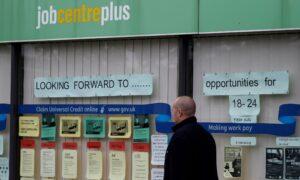Job Market Data Reveals UK Unemployment Rate Surpasses Forecasts
The slowdown in the labour market could result in a decrease in wage growth, prompting the Bank of England to consider lowering interest rates this year.
Liz McKeown, ONS director of economic statistics, mentioned that the decline in employment and the number of people on payrolls were tentative indications of a cooling jobs market.
She also observed a decrease in job vacancies and a slowdown in earnings growth this month, albeit at a reduced rate. Vacancies declined by 13,000 in the period from January to March, marking the 21st consecutive period of decline.
While regular wages (excluding bonuses) remain robust, the ONS noted that they were not as strong as in previous periods. In the three months leading up to February, the growth rate fell to 6 percent, down from 6.1 percent in the previous quarter.
Real Wages
The picture was slightly more positive in real regular wage growth, which increased by 2.1 percent in the highest climb in almost two-and-a-half years.
However, his Labour counterpart, Alison McGovern, highlighted the decrease in the employment rate, which still lags behind pre-pandemic levels.
The ONS has advised caution in interpreting the quarterly data due to increased volatility in the labor market survey stemming from low response rates.
Over 100,000 working days were lost in February across the country as health and social workers engaged in industrial action.
Inflation and Interest Rate
Labour market data is closely monitored by Westminster and the Bank of England (BoE) as they aim to bring inflation in line with its 2 percent target.
From an inflation perspective, wage growth outstripping productivity gains poses an inflation risk.
In her analysis of the UK labor market, Ms. Green noted that it lags behind other advanced economies and has yet to recover to pre-pandemic levels.
The BoE anticipates inflation to reach its 2 percent target in the second quarter of 2024, with a subsequent increase in the following quarters. The MPC emphasized the need for a prolonged restrictive monetary policy to ensure sustainable inflation reduction before considering interest rate cuts.
PA Media contributed to this report.





